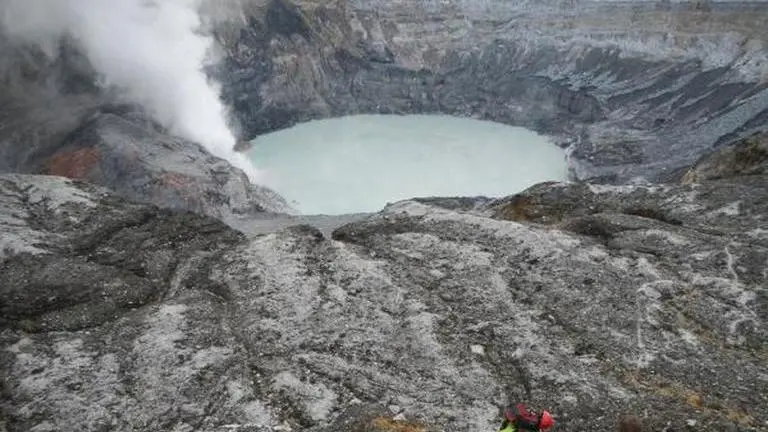Updated 29 January 2022 at 22:35 IST
Mars had environment like Costa Rica's toxic volcano crater housing bacteria: Study
Mars used to have an environment similar to the hostile Poás volcano crater in Costa Rica, which has been found housing thriving bacteria, the study says.
- Science News
- 2 min read

Microorganisms, that can survive in the Earth's most inhospitable environments, can provide clues about how life once existed on Mars, revealed experts from the University of Colorado Boulder. A team of researchers are currently conducting a study on bacteria, known as extremophiles, that have been found living in the hostile environment of the Poás volcano crater in Costa Rica. The crater houses a lake named Laguna Caliente, shown in the image above, which has a temperature up to the boiling point and constitutes heavy amounts of extremely toxic metals.
How do Costa Rica and Mars compare?
The reason why the researchers chose Costa Rica's volcanic crater is that its environment resembles what Mars might have had in its past, according to the experts. And since there are extremophiles thriving in such an environment, the scientists think that simple life might have existed on the red planet as well. Now known for their toughness, this class of bacteria reportedly creates energy using sulfur, iron and arsenic present in the crater, as an adaptation to survive in such a hostile environment.
Talking about the many survival methods of few organisms in the lake, Justin Wang, a graduate student at the University of Colorado Boulder said as per Daily Mail-
We believe they do this by surviving on the fringes of the lake when eruptions are occurring. This is when having a relatively wide array of genes would be useful.
The lake, which is 984 feet wide and about 100 feet deep, is loaded with toxic elements that make the water ten million times more acidic than tap water, the experts say in their study published in the journal Frontiers in Astronomy and Space Science. While this research sheds light on how 'Earth life' would have existed in a hydrothermal Martian environment, Wang says as per Daily Mail, "whether life ever existed on Mars and whether or not it resembles the microorganisms we have here is still a big question. We hope our research steers the conversation to prioritize searching for signs of life in these environments".
Advertisement
The experts hope that the samples returning from Mars in a few years will help them find evidence if life ever existed on Mars. Currently, NASA's Perseverance is scanning the Jezero crater, which according to Wang has some good targets for signs of life.
Image: University of Colorado Boulder
Published By : Harsh Vardhan
Published On: 29 January 2022 at 22:35 IST
